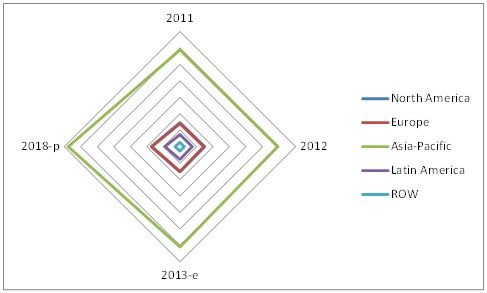Cryogenics is the study of materials,about their behavior and production,particularly at low temperature(below −150 °C, −238 °F or 123 K). These temperature are known as cryogenic temperature. Liquified gases are handled using cryogenic equipments to maintain them in liquid state,as normal equipments wont sustain them.
Types
 | |||
| Source - Google images |
Types
- Tanks
- Valves
- Vaporizers
- Pipes
- Cold traps
- Containers
- Pressure vessels and purifiers
In many cases, this equipment holds or assists in the transport of supercooled liquids, such as liquid helium, nitrogen, oxygen and argon. Transfer lines, for example, provide a safe means to transfer liquid cryogens from one location to another without endangering workers or machinery.
Proper insulation is often key to the effectiveness of cryogenic components, as it ensures that temperature levels are maintained within the equipment. Similarly, insulation protects equipment users from dangerous temperatures and materials during handling. Of the liquids regularly used in cryogenic operations, nitrogen and helium are the most common; liquid helium allows for extremely low temperatures. Also important to most cryogenic equipment, especially valves, gages and piping systems, is the pressure rating of the unit; the majority of cryogenic systems have specific pressure requirements in order to retain fixed temperatures.
Some cryogenic equipments are
JEOL JFD-9000 freeze-fracture device
cryopump/shroud configuration (10-8 torr)
high resolution metal/carbon coating
single and double replica methods
REICHERT Cryofract freeze-fracture device
ion pump/shroud configuration (10-7 torr)
operates at either liquid N2 or He temperatures
double replica methods
EMscope SP-2000A cryopreparation station (SEM)
super-cooled liquid nitrogen freezing chamber
cryo-sputter chamber, flash carbon evaporation
sublimation stage, vacuum transfer station
cryoSEM stage and airlock interface to the ETEC Autoscan
GATAN Cryotransfer microscope stage (to -150° C)
high resolution metal/carbon coating
single and double replica methods
REICHERT Cryofract freeze-fracture device
ion pump/shroud configuration (10-7 torr)
operates at either liquid N2 or He temperatures
double replica methods
EMscope SP-2000A cryopreparation station (SEM)
super-cooled liquid nitrogen freezing chamber
cryo-sputter chamber, flash carbon evaporation
sublimation stage, vacuum transfer station
cryoSEM stage and airlock interface to the ETEC Autoscan
GATAN Cryotransfer microscope stage (to -150° C)
interface to JEOL JSM-880 and 2000-FX
RMC MF-7200 Propane jet ultrarapid freezing device
state-of-the-art freezing in 1 millisecond
suitable for biologicals and emulsions
RMC MF-7200 Propane jet ultrarapid freezing device
state-of-the-art freezing in 1 millisecond
suitable for biologicals and emulsions
Cryogenic Equipment Market
The global market revenue is estimated to be $11 billion in 2011. The
market will grow by 8.2% in 2012 to $11.9 billion by 2017. Energy and
power sector holds the largest share in cryogenic equipment revenue.
Chemical industry is the second largest share holder followed by
metallurgical industry.Asia-Pacific region is the largest market for cryogenic equipments with 37% market share of global cryogenic equipment revenue. After Asia-Pacific, Europe, and North America regions are the second and third largest market respectively.
For more info,visit-



